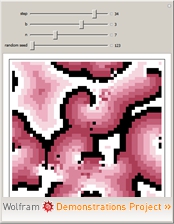Warning: include(../box/recentPapers.php): Failed to open stream: No such file or directory in /usr/local/var/www/automata/index.php on line 34
Warning: include(): Failed opening '../box/recentPapers.php' for inclusion (include_path='.:/usr/local/Cellar/php/8.4.1_1/share/php/pear') in /usr/local/var/www/automata/index.php on line 34
Warning: include(../box/admission.php): Failed to open stream: No such file or directory in /usr/local/var/www/automata/index.php on line 38
Warning: include(): Failed opening '../box/admission.php' for inclusion (include_path='.:/usr/local/Cellar/php/8.4.1_1/share/php/pear') in /usr/local/var/www/automata/index.php on line 38
Warning: include(../box/random.php): Failed to open stream: No such file or directory in /usr/local/var/www/automata/index.php on line 42
Warning: include(): Failed opening '../box/random.php' for inclusion (include_path='.:/usr/local/Cellar/php/8.4.1_1/share/php/pear') in /usr/local/var/www/automata/index.php on line 42
Cellular automata: formalism, stability and application portfolio

In this course an overview will be given of the modelling paradigms that are located at the discrete side of the spectrum of spatio-temporal models with particular emphasis on so-called cellular automata, which are mathematical models that are discrete in all their senses. Having introduced these paradigms, it will be shown how one can assess the stability of such models using similar tools as the ones used for characterizing continuous dynamical systems. Finally, the benefits of discrete modelling paradigms for setting up trustworthy in silico experiments will be demonstrated.
dr. ir. Jan Baetens
Department of Mathematical Modelling, Statistics and Bioinformatics
Ghent University
Course material
Stability properties of cellular automata
dr. ir. Jan Baetens
Department of Mathematical Modelling, Statistics and Bioinformatics
Ghent University
Cellular automata examples
An ever increasing amount of Internet resources is available on spatio-temporal models, especially on the utter discrete paradigm, e.g. cellular automata, which have known a true revival following Stephen Wolfram's magnum opus. Much less well-known are various types of mathematical models which are somewhere in between PDEs and CA which are at the extremes of the spectrum of mathematical models available for spatio-temporal modelling. For instance, coupled-map lattices share discreteness of time and space with CA, though can take arbitrary state values like PDEs.
Partial differential equations
PDEs are at the continuous extreme of the earlier mentioned model spectrum, and are the tool par excellence to solve numerous engineering problems. They have been long- and well-studied as extensions of ordinary differential equation for spatio-temporal evolving phenomena which is most often resorted for solving engineering problems. For that reason, several PDEs have been named due to their frequent use in various scientific domains, such as the heat equation, the diffusion equation, and so on. Numerous textbooks have been published on the topic, which are already covered by (advanced) courses offered at most engineering and science faculties.
 |
Figure 2: final temperature distribution modelled by means of the 2D heat equation |
As an example, Figure 2 shows the steady-state temperature distribution in initially cold room (blue) which is heated through heating elements installed in the floor and ceiling of the room.
Cellular automata
A cellular automaton is at the other end of the earlier mentioned model spectrum, being discrete in all its senses, e.g. space is represented by an infinite lattice of cells, updates occur only at discrete time steps and the states can only take a finite number of values. CA were first introduced by John von Neumann and Stanislaw Ulam as `cellular spaces', and later on explored in detail by Stephen Wolfram who postulated that only four different classes of CA-behaviour would exist which has not been countered until now. According to this classification, CA can evolve
- homogeneous patterns
- periodic, nested structures
- chaotic patterns
- local, persistent structures
 |  |
| (a) | (b) |
 |  |
| (c) | (c) |
Figure 3: possible CA-behaviour: homogenous (a), nested (b), chaos (c) and persistent structures (d) | |




